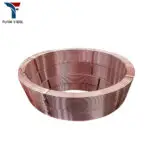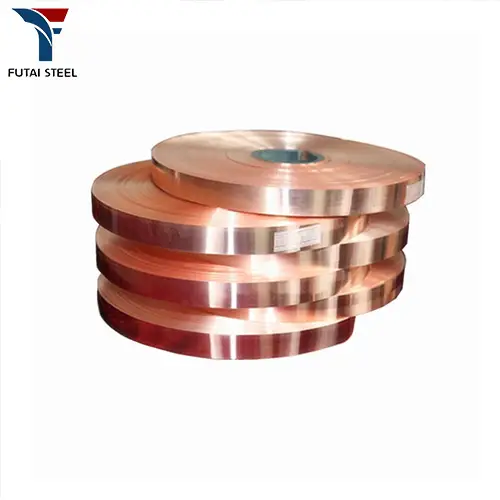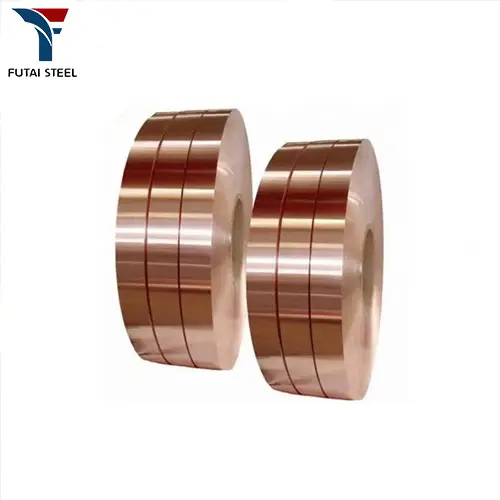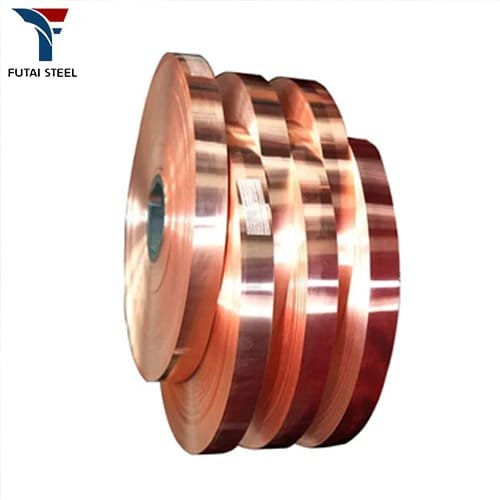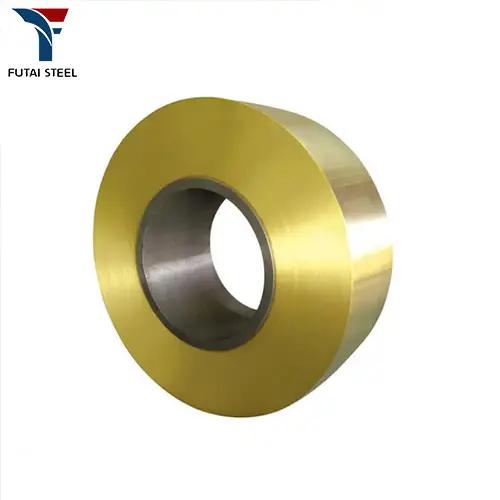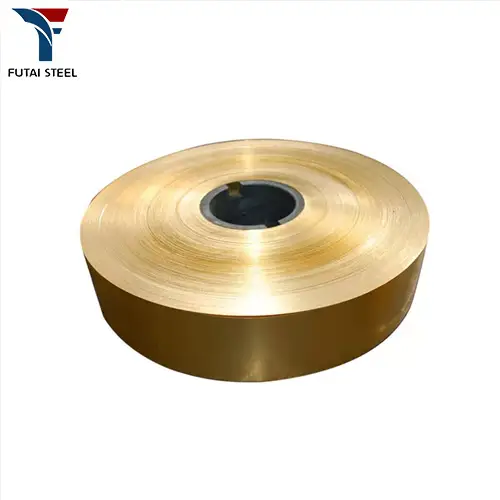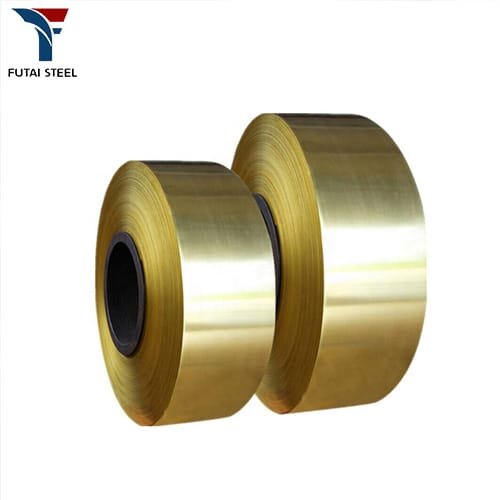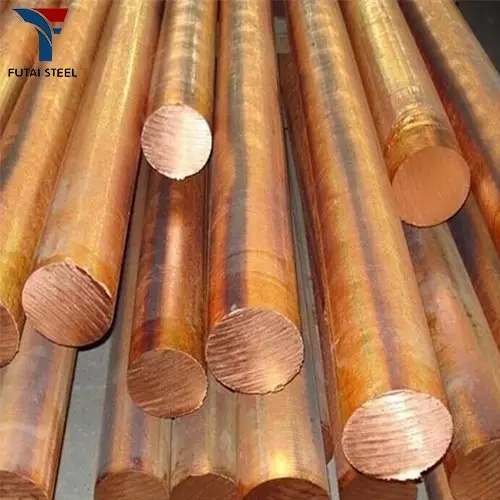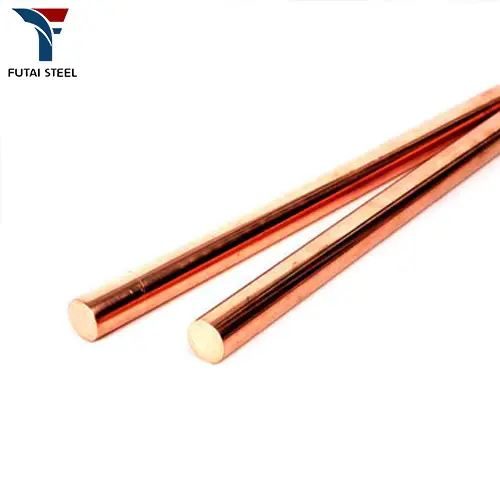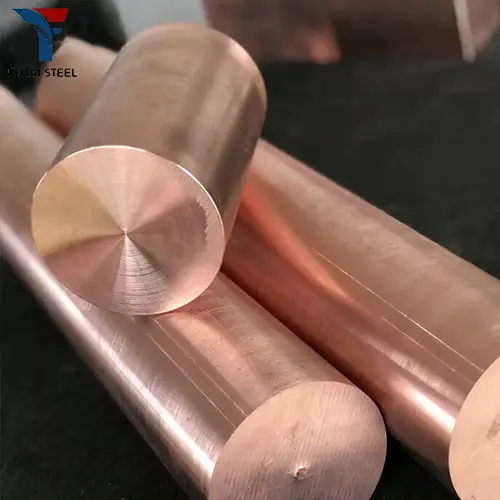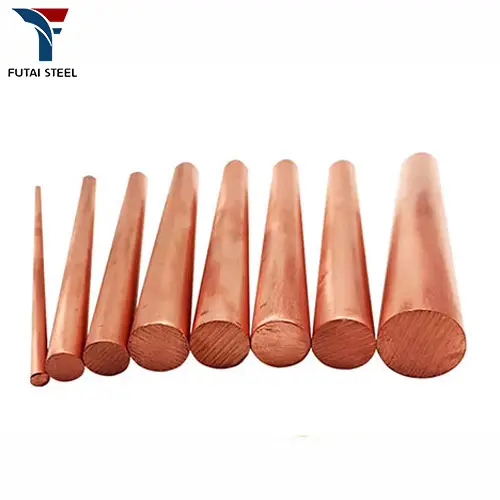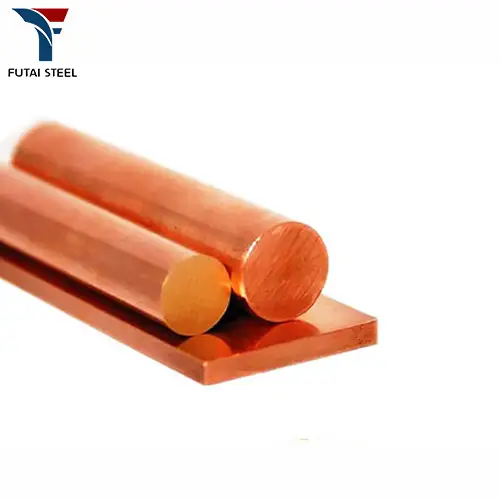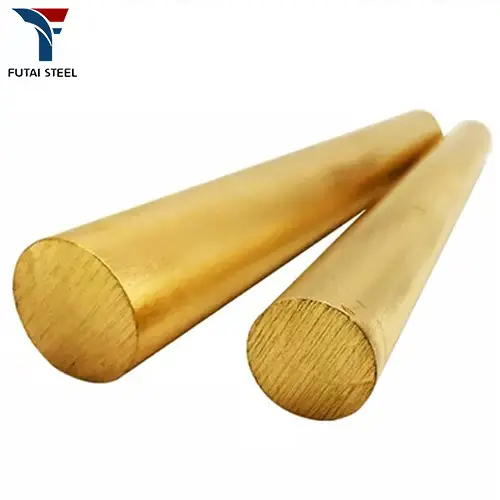Product Center
/ Product
Navigation
Coiled copper tubes are made by winding copper tubes into spirals or rings to form a compact structure. They are light in weight, have good thermal conductivity, and have high low-temperature strength. Coiled copper tubes are widely used in air conditioning and refrigeration systems, heat exchange equipment, oxygen production equipment, and other fields.
Send Us A Message
- Purple copper strip is a material used for manufacturing wires, cables, electric brushes, etc. Purple copper is a relatively pure copper. It fully demonstrates the ductility, conductivity, and corrosion resistance of copper metal, among which ductility is an important characteristic of copper decoration. Copper has a high melting point and is difficult to cast, but its good ductility compensates for this disadvantage, making it easy to process into various shapes and patterns. The dark red metallic luster gives it a sense of modernity while also possessing a calm and noble quality, making it the most commonly used material in copper jewelry.
- Purple copper strip is a material used for manufacturing wires, cables, electric brushes, etc. Purple copper is a relatively pure copper. It fully demonstrates the ductility, conductivity, and corrosion resistance of copper metal, among which ductility is an important characteristic of copper decoration. Copper has a high melting point and is difficult to cast, but its good ductility compensates for this disadvantage, making it easy to process into various shapes and patterns. The dark red metallic luster gives it a sense of modernity while also possessing a calm and noble quality, making it the most commonly used material in copper jewelry.
- Purple copper strip is a material used for manufacturing wires, cables, electric brushes, etc. Purple copper is a relatively pure copper. It fully demonstrates the ductility, conductivity, and corrosion resistance of copper metal, among which ductility is an important characteristic of copper decoration. Copper has a high melting point and is difficult to cast, but its good ductility compensates for this disadvantage, making it easy to process into various shapes and patterns. The dark red metallic luster gives it a sense of modernity while also possessing a calm and noble quality, making it the most commonly used material in copper jewelry.
- Brass has extremely good plasticity (the best among brass) and high strength, good machinability, easy welding, and is very stable to general corrosion, but it is prone to corrosion cracking; Brass strip is an alloy of copper and zinc, named after its yellow color. Brass strips have excellent mechanical and wear resistance properties, and can be used to manufacture precision instruments, ship parts, gun casings, etc. Brass makes a pleasant sound when struck, so instruments such as gongs, cymbals, bells, and horns are all made of brass. According to its chemical composition, brass is divided into two types: ordinary copper and special brass.
- Brass has extremely good plasticity (the best among brass) and high strength, good machinability, easy welding, and is very stable to general corrosion, but it is prone to corrosion cracking; Brass strip is an alloy of copper and zinc, named after its yellow color. Brass strips have excellent mechanical and wear resistance properties, and can be used to manufacture precision instruments, ship parts, gun casings, etc. Brass makes a pleasant sound when struck, so instruments such as gongs, cymbals, bells, and horns are all made of brass. According to its chemical composition, brass is divided into two types: ordinary copper and special brass.
- Brass has extremely good plasticity (the best among brass) and high strength, good machinability, easy welding, and is very stable to general corrosion, but it is prone to corrosion cracking; Brass strip is an alloy of copper and zinc, named after its yellow color. Brass strips have excellent mechanical and wear resistance properties, and can be used to manufacture precision instruments, ship parts, gun casings, etc. Brass makes a pleasant sound when struck, so instruments such as gongs, cymbals, bells, and horns are all made of brass. According to its chemical composition, brass is divided into two types: ordinary copper and special brass.
- "Copper bar" refers to a solid piece of copper in a bar or rod shape. Commonly used in electrical engineering, construction, and various industrial applications, copper bars possess high electrical conductivity, making them ideal for electrical transmission and grounding purposes. They are also employed in heat exchangers and other systems where their thermal conductivity is valuable. The versatility of copper bars allows them to be found in various diameters, lengths, and even special alloys to suit specific requirements.
- "Copper bar" refers to a solid piece of copper in a bar or rod shape. Commonly used in electrical engineering, construction, and various industrial applications, copper bars possess high electrical conductivity, making them ideal for electrical transmission and grounding purposes. They are also employed in heat exchangers and other systems where their thermal conductivity is valuable. The versatility of copper bars allows them to be found in various diameters, lengths, and even special alloys to suit specific requirements.
- "Copper bar" refers to a solid piece of copper in a bar or rod shape. Commonly used in electrical engineering, construction, and various industrial applications, copper bars possess high electrical conductivity, making them ideal for electrical transmission and grounding purposes. They are also employed in heat exchangers and other systems where their thermal conductivity is valuable. The versatility of copper bars allows them to be found in various diameters, lengths, and even special alloys to suit specific requirements.
- "Copper bar" refers to a solid piece of copper in a bar or rod shape. Commonly used in electrical engineering, construction, and various industrial applications, copper bars possess high electrical conductivity, making them ideal for electrical transmission and grounding purposes. They are also employed in heat exchangers and other systems where their thermal conductivity is valuable. The versatility of copper bars allows them to be found in various diameters, lengths, and even special alloys to suit specific requirements.
- "Copper bar" refers to a solid piece of copper in a bar or rod shape. Commonly used in electrical engineering, construction, and various industrial applications, copper bars possess high electrical conductivity, making them ideal for electrical transmission and grounding purposes. They are also employed in heat exchangers and other systems where their thermal conductivity is valuable. The versatility of copper bars allows them to be found in various diameters, lengths, and even special alloys to suit specific requirements.
- Brass bar "usually refers to a brass rod, which is a long strip of material made of brass. Brass is an alloy of copper and zinc, which has excellent processability, corrosion resistance, and good electrical and thermal conductivity. Brass rods have a wide range of applications in various fields, such as electrical, construction, and mechanical manufacturing, due to their unique physical and chemical properties. They can be used to make various connectors, fasteners, conductive components, and decorative parts. Brass rods are typically supplied in different diameters, lengths, and specifications to meet the needs of various industries.

